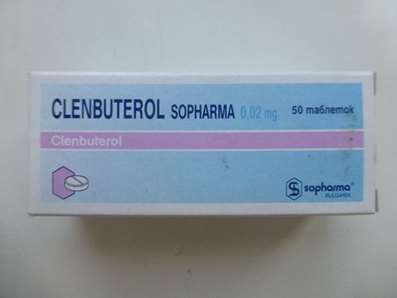Power training: sharp and chronic changes of concentration of somatotropin hormone
26 Dec 2016
Power exercises represent the type of physical activity possessing the most expressed anabolic impact on muscles and connecting fabrics (Kraemer et al., 1996). Somatotropny hormone (STG) which is called still growth hormone is pleyotropny polypeptide which thanks to the mediated participation in a set of processes of growth and a metabolism has various effect on a metabolic condition of a human body. Complexity of system of products and secretion of STG adenogipofizy, availability of various complexes and STG-binding proteins (GHBP) only begin to be discussed in the publications devoted to occupations by power exercises and a power training and still remain a puzzle which many parts still require in-depth examination (Nindl et al., 2003). Anyway, understanding of responses and adaptation changes of STG about a pier. weighing 22 kd will and remain further an important component of our ideas of adaptation reactions of an organism to occupations of a power orientation. In case of formation of a gene of hGH-N in adenogipofiza the main representative of the STG family with a molecular weight of 22 kd is formed. This protein consists of 191 amino-acid remaining balance (monomer about a pier. weighing 22 to Yes constitutes about 21% of all STG circulating in blood system). The following on representation is the protein with a molecular weight of 20 kd constituting about 6% of STG of plasma of blood. This form a product of transfer of MRNK formed as a result of alternative synthesis in case of which are lost 32 — the 46th an amino-acid remaining balance. Besides, hormone of human height can be exposed to post-transmitting modifications and proteolytic splitting in peripheral fabrics owing to what various options and aggregates (i.e. dimeasures, trimmers, pentameasures), and also the fragments found in blood are formed. Existence is high - and low-affine STG-binding proteins (which provided by hypophysis, and also are formed as a result of proteolysis splitting of a receptor of STG) even more increase complexity of the nature and spatial distribution of options of STG in the blood circulatory system.
Secretion and control of level of somatotropic hormone
Development and secretion of many pituitary hormones is under control of hypothalamus. For stimulation and suppression of secretion of STG the organism uses subthalamic hormones somatoliberin (somatotronin-rileasing-factor) and somatostatin respectively. These regulatory factors consecrate the neurons located in arcuate, peri-and paraventrikulyarny cores of hypothalamus which terminations of axons reach a median eminence of a hypothalamus. Somatoliberin and somatostatin are allocated in portal system of venous capillaries which carries out a role of humeral way of their transfer immediately to a forward share of a pituitary body. The portal circulatory system begins from capillary loops in the field of a median eminence of a gray hillock of a hypothalamus and on portal veins of a leg of a pituitary body gets to a pituitary body. In a forward share of a pituitary body (adenohypophysis) portal vessels are divided into sinusoids which provide supply of cells with nutrients. These vessels have very small diameter and extremely high-permeability of walls. Thanks to it regulatory factors from a hypothalamus get to secretory cells of an adenohypophysis (i.e. somatotrofa). Use of a centrifugation in a gradient of density allowed allocating functionally various types of somatotrof (t. page of a cell like I and II, or strips of I and II). Somatotrophic neurons from these two fractions differ also morphologically on the nature of coloring and met structure of a cell. Besides, it was shown that they differ on the sensitivity to sub thalamic regulatory factors like I higher sensitivity is inherent in cells (Snyder et al., 1977). The question of physiological value of such cellular heterogeneity, as well as of possible differential impact of an exercise stress on different types of cells, remains unresolved, representing the attractive field for future researches as it is known that complexity is interconnected by the induced physical activity of secretion and adaptic changes with heterogeneity of various molecular isoforms of somatotropic hormone and its units.
According to classical representations, the central mechanism which is the cornerstone of the wavy nature of secretion of STG is increase in level of somatoliberin in portal system of hypothesis in a combination to recession of secretion of somatostatin. Exact molecular mechanisms of wavy nature of secretion meanwhile aren't beyond assumptions. On the main mechanism of control influence of other regulatory factors defining sensitivity of somatotrof at any present situation of time is imposed. There are proofs that somatoliberin stimulates biosynthesis of somatotropin and his secretion whereas somatostatin suppresses secretion, without exerting impacts on production of hormone. Assume also that somatoliberin is necessary for initiation of emission of STG, and somatostatiní determines the size of this emission. The last is confirmed by researches in which it has been shown that the increase in the STG level induced somatoliberin amplifies in case of application of antagonists of somatostatin (namely, pyridostigmine atsetilkholinesteraza inhibitor and hexapeptide of STG of peptides stimulating secretion) (Sarr to et al., 1993). The cloning of the receptor stimulating secretion of STG has also shown existence of one more proteinaceous factor stimulating secretion of STG, ligand of this receptor which didn't manage to be identified until recently when it has been established that it is an eagle owl — an element of new physiological system of regulation of secretion of STG. You can try Epifamin.
Authentically an established fact of cyclic, wavy nature of secretion of STG adenogipofiz within a day with the maximum surge in secretion during a phase of medlennovol dream. Such wavy nature of secretion of STG is caused by regulatory influence of two hypothalamic hormones, one of which somatoliberin stimulates, and another somatostatin suppresses release of hormone of growth. The ratio of these two hormones determines the relative size of emission of STG adenogipofiz.
An impression is made that STG can make negative return impact on own secretion. At introduction of a disposable dose of STG to the person the subsequent increase in secretion of hormone in response to stimulation somatoliberin considerably decreases or it isn't found in general (Scanlon et al., 1996). Such decrease in sensitivity of somatotrof can be prevented by preliminary activation the ways. At the moment it is represented that changes in the level of secretion of STG are mediated through suppression of secretion of a somatostatin in holinergic ways (Giustina, Veldhuis, 1998). As it was noted above, somatostatin suppresses secretion of STG, but not synthesis of hormone. It is very important as allows explaining fast restoration of secretion of STG after application and the subsequent removal of somatostatin (Giustina, Veldhuis, 1998).
Neuron regulation modulators of growth hormone secretion
There is a set of neuron modulators (neuropeptids, neurotransmitters, physiological states) which can play this or that role in regulation of secretion of STG by means of somatoliberin and somatostatin and which have undergone close attention at a research of regulatory mechanisms. It has been suggested that "the specific control of secretion of somatoliberin and somatostatin which is carried out by sexual steroids can cause sexual distinctions whereas unknown (not with sexual differences) factors can define ability of physical activity substantially to resist to effect of STG" (Veldhuis ct al., 2004).
In the tab. the secretions of STG given about the known modulators are generalized. Their action can consist in stimulation (a1-adrenergic drugs, amino acids, Dofaminum, GAMK (-In), galanin, Somatotropinum rileasing peptide, Histaminum, hypoglycemia, neyromedin with, opiates, serotonin, Diabetum, single and long exercise stresses, an insufficient delivery and a stress) or in suppression (a2-adrenergic drugs, immunization, Cortisonums/glucocorticoids, glucose, hypothyroids, an obesity, aging) of secretion of STG. Peripheric chain of feedback regulating secretion of STG of somatotrofama is mediated by a complex of impacts of STG on targets, namely, insulin like factor of body height of I (IFR-1), glucose and fatty acids can make separately regulatory impact on activity of gipotalamo-pituitary system. The set of the various neuron regulatory factors exerting impact of pas secretion of STG presented in the tab. once again emphasizes complexity of system of a regulation of secretion of STG. Interaction of exercise stresses and many of these factors concerning control of secretion of STG remains obscure so far.
Molecular heterogeneity of somatotropic hormone
Somatotropin hormone has two unique features: wavy nature of secretion and considerable molecular heterogeneity. In case of an expression of a gene of GH-N the main representative of the STG family hormone isoform with a molecular weight of 22 to Yes. is formed. This protein represents one polipeptidpy chain from 191 amino-acid remaining balance having two internal disulfide bridges (monomeric STG about a pier. weighing 22 to Yes constitutes about 21% of all hormone circulating in blood system). The form following on representation is the molecule weighing 20 kd (monomeric STG about a pier. weighing 20 to Yes constitutes about 6% of the hormone circulating in blood system) — a product of broadcast of MRNK which is formed as a result of the alternative synthesis leading to loss of the site with amino acids 32 — 46. STG of the person can be also exposed to post-transmitting modifications and proteolytic splitting in places of the impact that leads to forming of additional options, aggregates (dimer, trimmers, and pentamericans), and also the fragments of hormone which are often found in blood. Existence high-affine and low-affine STG-binding proteins (GHBP) which are formed by secretion by hypothesis and in case of proteolysis splitting of a receptor of hormone of growth, even more complicates structure and spatial distribution of various forms and complexes of hormone of growth. Such molecular heterogeneity can have a certain physiological value as it was shown that various forms of hormone can have various biological activity (i.e. to make impact, various in size, in biological tests). Content of the cells of hypophysis creating a strip of I and II in case of centrifugation in density gradient the quantitative ratio of the STG various isoforms of N of blood can exert impact of a pas and as a result can help to understand a variety of the physiological reactions concerning STG which only one isoform of hormone with a molecular weight of 22 kd can't explain (Hymer et al., 2001).
Secretion of somatotropin hormone
Secretion of STG is subject to influence of a number of factors which treat age, sex, nature of food, a stress, level of other hormones (such as sexual steroids, hormones of a thyroid gland and IFR-1), availability of fatty cellulose, level of physical fitness and physical activity.
All these indicators can influence content of STG in blood. Since early studies of Hunter (Hunter et al., 1965) it is established that physical activity is a natural stimulator of secretion of STG. In turn STG has a direct bearing on stimulation of anabolic processes in muscular and connecting fabrics, in particular it strengthens at the cellular level consumption of amino acids and synthesis of protein in skeletal muscles what the hypertrophy of muscle fibers of both types is result of (Noal et al., 1957; Ullman, Oldfors, 1989; Crist etal., 1991). STG is also capable to stimulate growth of cartilages and formation of a bone tissue that is shown in increase in mineral density of a bone tissue and in the form of other signs (Isaksson et al., 1990; van der Veen, Netelenbos, 1990; Parfitt, 1991; Bikle et al., 1995; Orwoll, Klein, 1995). Despite the experimental data showing existence of the STG extensive family the classical dogma claiming that the most part of anabolic effects of STG is mediated through secretion of IFR-1 by cells of a liver and other fabrics (Florini et al was pushed., 1996). This assumption, undoubtedly, could be reliable if STG would be provided by one isoform about a pier. weighing 22 kd, however the fact of existence of superfamily of STG polypeptides and the connecting proteins requires its attentive review. Anyway, the secretion of STG induced by physical activity at least partly is responsible (directly or indirectly) for anabolic effect of occupations physical exercises. Moreover, there are experimental data obtained on rats which show stimulation by somatotropin hormone of autocrin and paracrin products IFR-1 skeletal muscles, cartilaginous and bone tissue (Turner et al., 1988; Isaaksson et al., 1990; Bikle et al., 1995). And at last, STG can interact directly or indirectly with androgens (Jorgensen et al., 19%), estrogen (Holmes, Shalet, 1996) and tireoid hormones (Weiss, Refetoff, 1996) concerning secretion and impact on fabric target.
The changes of concentration of somatotropin hormone induced by power exercises
For the last 15 years became obvious that changes of maintenance of STG in blood are defined by features of the program of occupations physical exercises. To understand a combination of factors which can mediate such differentiated answer to a set of the various training programs applied in a power training it is necessary to consider some of key parameters which determination happens at the choice of elements of programming during development of the training program (Fleck, Kraemer, 2004). It is obvious also that interaction of various parameters of training occupation can play an important role in determination of size of changes of the STG level. Treat number of the key external factors stimulating increase of concentration of STG in the blood circulatory system:
- ·volume involved in muscle work performance;
- ·the size of the loading (burdenings) used when performing exercises;
- ·volume of physical activity;
- ·duration of intervals of rest between stages of performance of exercises.
Activation of enough muscular tissue has critical value for increase in concentration of STG in blood plasma. The volume of the muscles involved in work performance depends on the used loading, the total amount of the performed work and like exercises (for example, exercises for small muscular groups in comparison with exercises for large muscular groups). The first data confirming these representations have been received by Vankhelder (Vanhcldcr et al., 1984). By results of this research, the STG level significantly increased in comparison with a condition of rest after performance of 7 approaches of squats with loading of 85% of 7PM. At the same time at decrease in size of burdening to 28% of 7PM, at equal on duration of intervals for rest and the number of the general performed work, no changes of the STG level in blood were observed. On the basis of "the principle of the size" overcoming resistance equal to 28%, loadings require smaller quantity of motive units, than for 85%. Thus, activation of sufficient volume of muscular tissue is one of the defining elements of the training influence causing essential increase in concentration of STG.
The amount of physical activity or total quantity of the performed work also plays a role in determination of size of response. On condition of a permanency of other elements of programming force of exercises, the sequences of their accomplishment, duration of intervals of rest and size of burdening and increases only the number of approaches and consequently, and amount of the performed work, observed increase of size of response secretion of STG. This effect was shown for men and women with use of the comprehensive program of power exercises for muscles of all body with the size of burdening equal 10 PM (Mulligan et al., 1996; Gotshalk ct al., 1997). Besides, higher level of power physical fitness is able to afford engaged to execute bigger amount of physical work that can also promote achievement of more significant increase in secretion of STG (Ahtiainen et al., 2003). About the threshold number of physical work necessary for stimulation of increase in STG in blood, it is known a little, however it is very probable that this parameter shall be in a certain communication with other elements of programming (duration of intervals of rest, amount of the muscular tissue involved in work, the used lot of burdening).
In general the complex effect of various options of a combination of elements of programming (the choice of exercises (for example, for large and small muscular groups), the sequence of accomplishment of exercises (for example, in the beginning for large or for small muscular groups), duration of intervals of rest (short or long), the size of the used burdening (for example, 5 PM or 10 PM) and the number of approaches or total amount of the performed work | small or big |) when planning occupations power exercises can be expressed in various response that is of increase in the STG level. Despite a large number of possible combinations, preliminary researches showed that when comparing programs of occupations with use of a set of exercises for muscles of all body it is possible to allocate three factors which exert the most noticeable impact on changes of the STG level at men and women, namely: a combination of large volume of the performed work, short duration of intervals for rest (1 min. between stages of accomplishment of exercises) and use of average size of burdening 10 PM (Kraemer et al., 1990, 1993).
As when carrying out training occupations the wide range of different combinations of elements of programming is applied, answer increase of the STG level depends on a choice of parameters of occupations. There is an impression, as to a force training there shall be some basic principles of formation of a training incentive. Impact which they exert on the acid-base balance playing a major role in stimulation of secretion of STG in blood system became the most amazing opening concerning variable elements of programming and STG. Each of four factors mentioned above can be manipulated for rendering impact on the metabolic processes which are accompanied limited or, on the contrary, the increased accumulation of ions of hydrogen and lowering of pH of blood which is in turn responsible almost for a half of summary change of framing of STG. Thus, the shift of acid-base balance (namely, increase in hydrolysis of ATP, lowering of pH, increase of concentration of ions of hydrogen) becomes the main factor defining contents of the isoform STG about a pier. weighing 22 kd in blood (Gordon et al., 1994). It is shown that abbreviation of duration of intervals for rest between approaches in case of execution of physical exercises leads to the most noticeable increase in response in case of execution of force exercises (Kraemer et al., 1990, 1993). At the same time abbreviation of intervals of rest will also influence a lot of burdening which will be able to lift engaged (Kraemer et al., 1987), therefore, critical modulation of lot of the used burdening, and also volume of the fabric involved in operation execution which define answer increase in STG takes place. However the Taka is glad (Takarada et al., 2000) showed that occlusion (blood circulation violation) of a hand can significantly influence the STG level, noticeably increasing concentration of hormone in case of rather low intensity (20% from 1 PM) while without occlusion no changes of level of hormone were watched. It is possible to assume that in regulation of secretion of the isoform STG about a pier. the hypoxia weighing 22 kg and violation of acid-base balance play the main role (Sutton et al., 1983). Training occupations of a force directivity with short intervals for rest (1 min. between approaches and exercises), the average level of intensity (loading in the range of 8 — 10 PM) and a complex from 8 — 10 exercises for muscles of all body can cause such physiological response and lead to the expressed change of the STG level in blood).
The bulk of researches on the matter were devoted to a study of urgent changes of maintenance of STG during restoration (normal no more than 2 h after completion of an occupation). The contribution of wavy nature of secretion to different time of day and a role of STG ï different phases of the period of restoration after physical activity of a force directivity still should be evaluated. Makmyurrey (McMurray et al., 1995) provided results of researches of changes of a typical profile of secretion of STG at night after classes physical exercises of force directivity. The program of an occupation included execution of 3 approaches with loading of 6 — 8 PM for 6 different exercises (only 18 approaches). Blood samples for the analysis selected in a period from 21:00 till 07:00. Researchers didn't find any influence of occupations force exercises on the nature of secretion of STG at night. However Nindp (Nindl et al., 2001) researched a profile of secretion of STG throughout more long time. The intensive occupation of a force training began at 15:00, included the considerable volume of a training load only 50 approaches of the exercises providing use of large muscular groups. Blood was selected by each 10 min. from 17:00 till 6:00 in monitoring and after the force training. Data of this research show that the intensive occupation force exercises in the second half of day leads to lowering of amplitude of the maximum night burst of STG. At the same time the average content of hormone of growth in blood wasn't exposed to essential changes. It was explained by the fact that intensive occupations force exercises exerted differential impact on the nature of secretion of STG at night: concentration of STG in the first half of night was slightly lower in comparison with monitoring, and in the second half of night this index was higher, than in a check group. Mean values of the maximum concentration of STG and amplitude of bursts of hormone were lower after classes’ physical exercises.
Several possible explanations of the received results which are based on the assumption of increase of secretion of somatostatin after classes by physical exercises were offered. Though somastatin inhibits secretion of STG, it doesn't make negative impact on hormone biosynthesis. It is very important as allows explaining fast restoration of secretion of STG after deleting somatostatin. Lowering of amplitude of the night peaks in a group of persons which were engaged in force training in comparison with a check group was watched during the period from 23:00 till 03:00 from 03:00 till 06:00 amplitude of bursts of STG was higher in the experimental group. Despite the lack of essential differences between mean values of concentration of STG in control and experimental groups, occupations physical exercises influence the temporal nature of secretion of STG in the afternoon. From the mechanistic point of view the intensive force training can be followed by increase in intensity of secretion of somatostatin during the period from 23:00 till 03:00. At this time there is some suppression of secretion of STG, at the same time hormone biosynthesis isn't exposed to any influences. About 03 — 00 there is a lowering of intensity of secretion of somatostatin and increase in separation of STG which synthesis and accumulation happened when secretion was suppressed. During these researches it was also shown that IFR-1 in this case, most likely, doesn't take a part in regulation of secretion of STG hypothesis cells as essential differences in concentration of IFR-1 in blood in control and experimental samples aren't revealed. It is quite probable also that the watched changes in the nature of secretion of STG can be caused by some other metabolic and hormonal signals, for example changes of secretion of somatoliberin, hexapeptides or grelina.

 Cart
Cart





